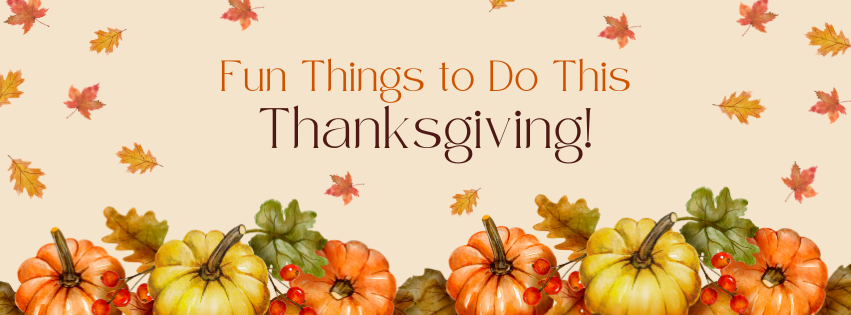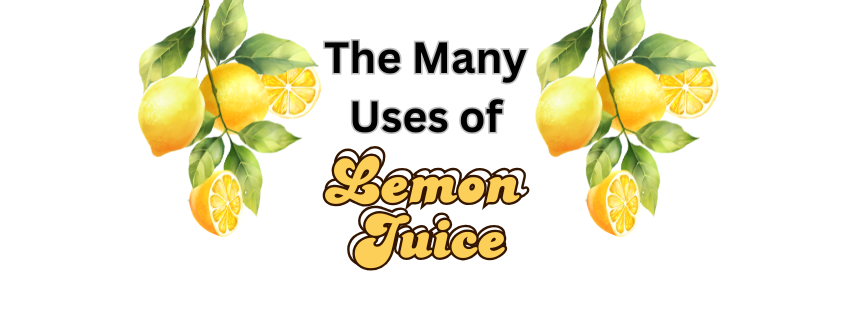Love-Filled Valentine's Drinks
Keep scrolling for some fun, festive, and functional Valentine's Day drinks!
Raspberry Cream Delight Smoothie
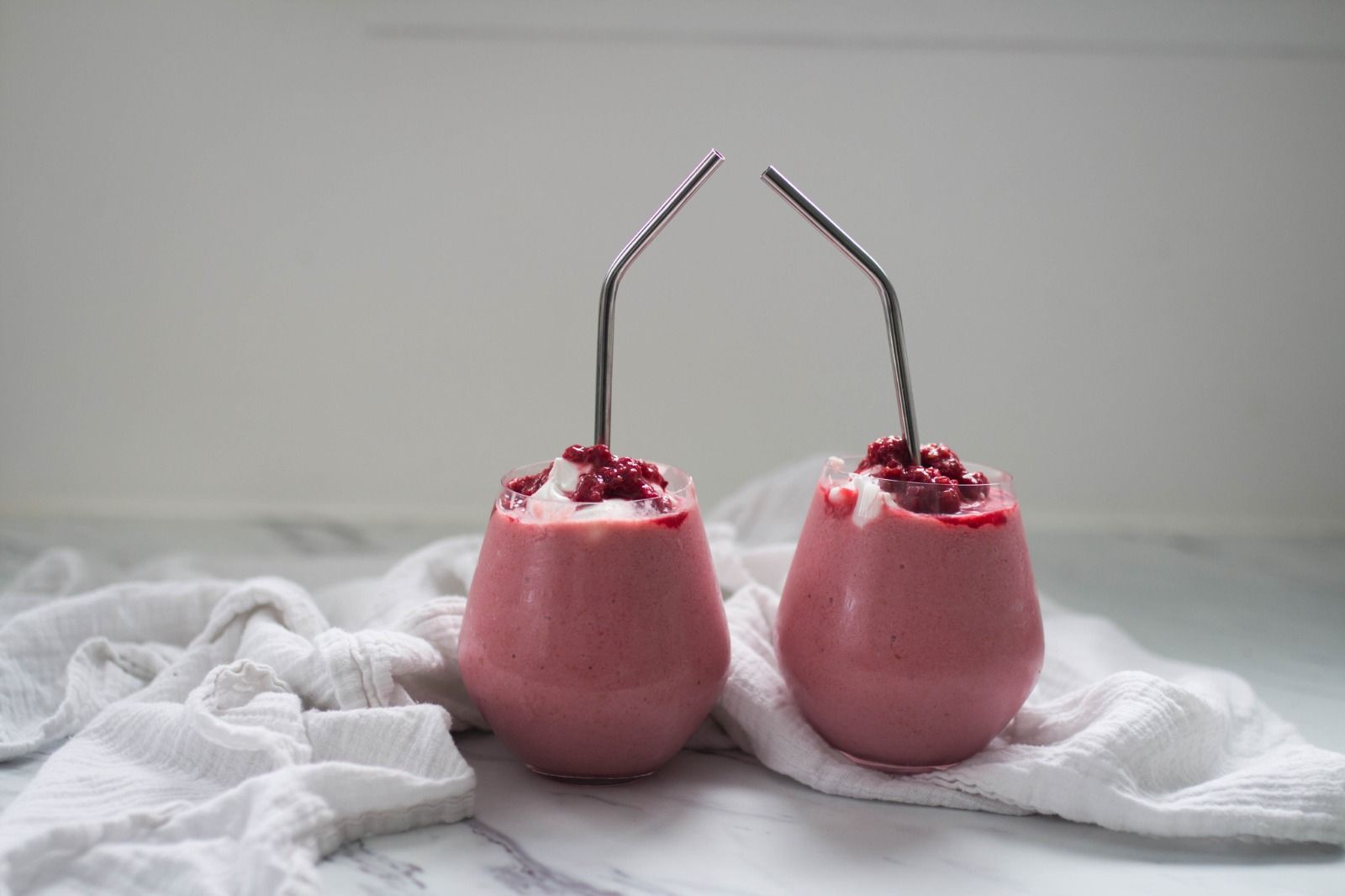
Ingredients
- 1 cup of frozen raspberries (ex. Stahlbush Island Farms)
- 1/2 cup of strawberries (fresh or frozen)
- 3 frozen bananas
- 1/2 cup of coconut whipped cream or coconut milk
- 1/2 cup of water
- *for protein: add a scoop or two of your favourite protein powder or 2 tbsp of hemp seeds!
Directions:
Simply mix all ingredients together in a blender, leaving most of the whipped cream and a few strawberries to top it. Or, pour into a bowl and decorate with nuts, coconut, and fruit to make a beautiful smoothie bowl. Yum yum yum!!!
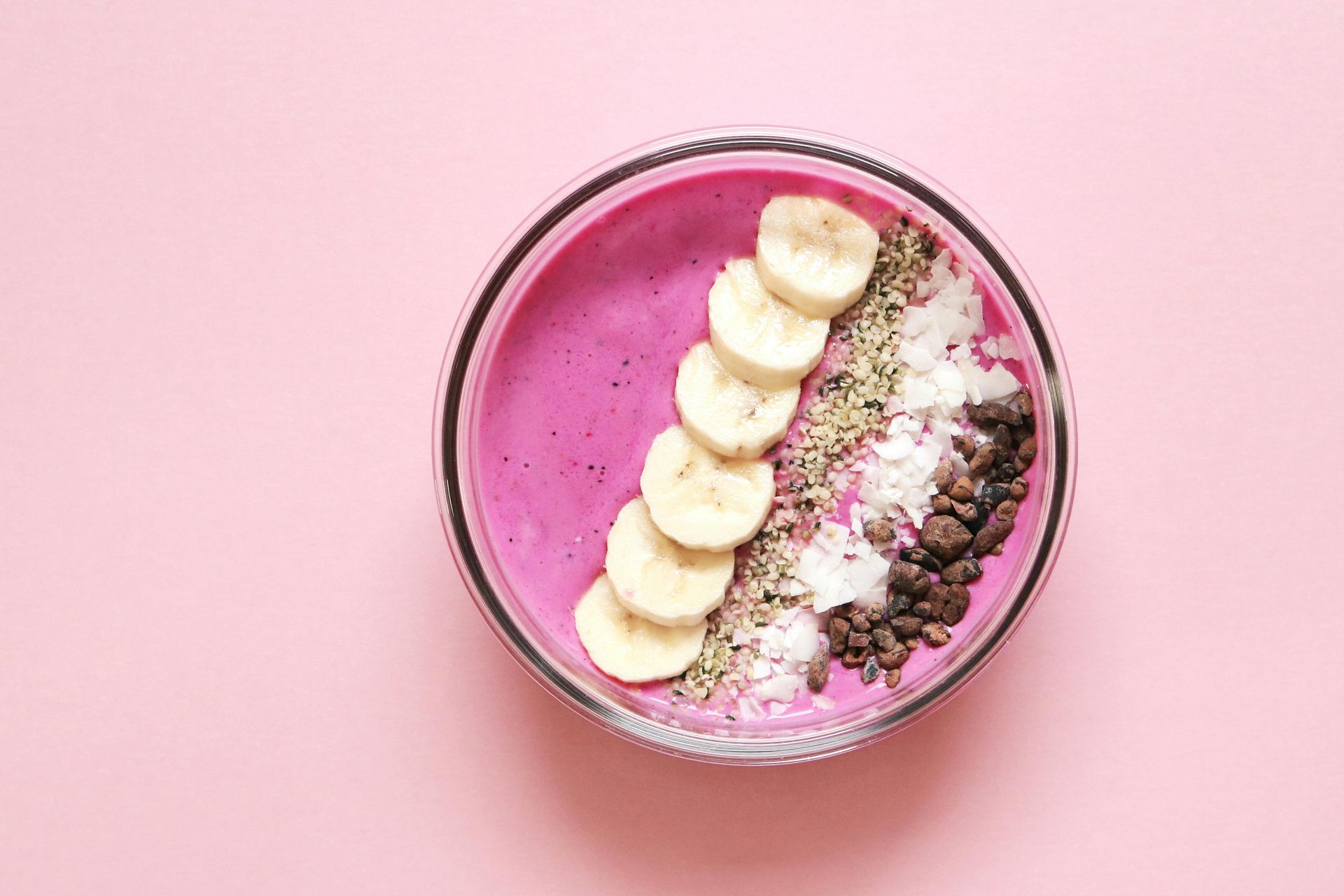
Starbucks Strawberry Hibiscus Pink Drink Dupe
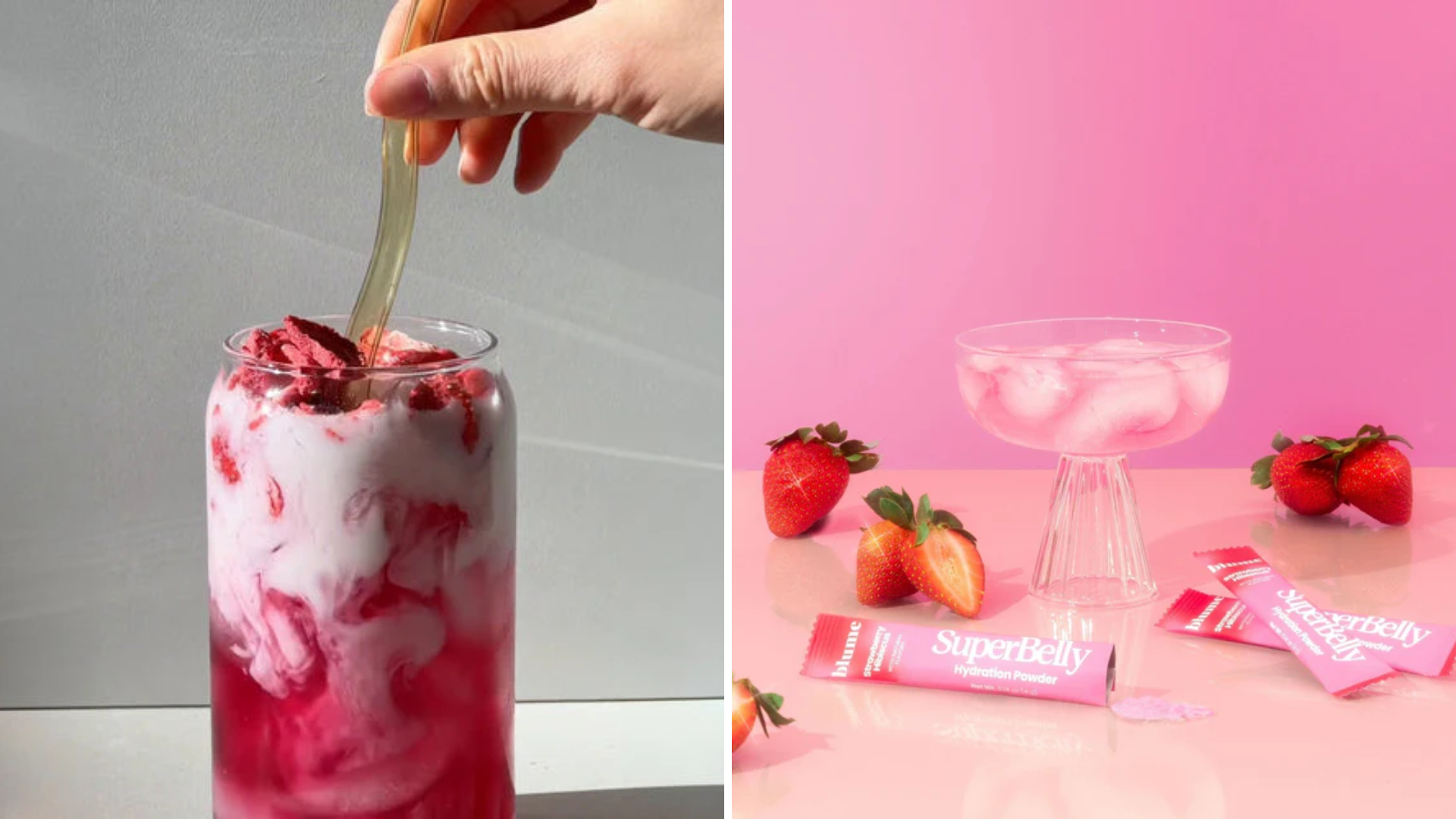
Ingredients
- 1 cup of water
- 1 packet of Strawberry Hibiscus SuperBelly
- ½ cup of coconut milk
- A handful of frozen or freeze dried strawberries
Directions
- Mix your SuperBelly with 1 cup of cold water until blended.
- Add in your coconut milk and stir.
- Add ice and your frozen or freeze dried strawberries.
- Stir and enjoy!
Warming Beet Latte
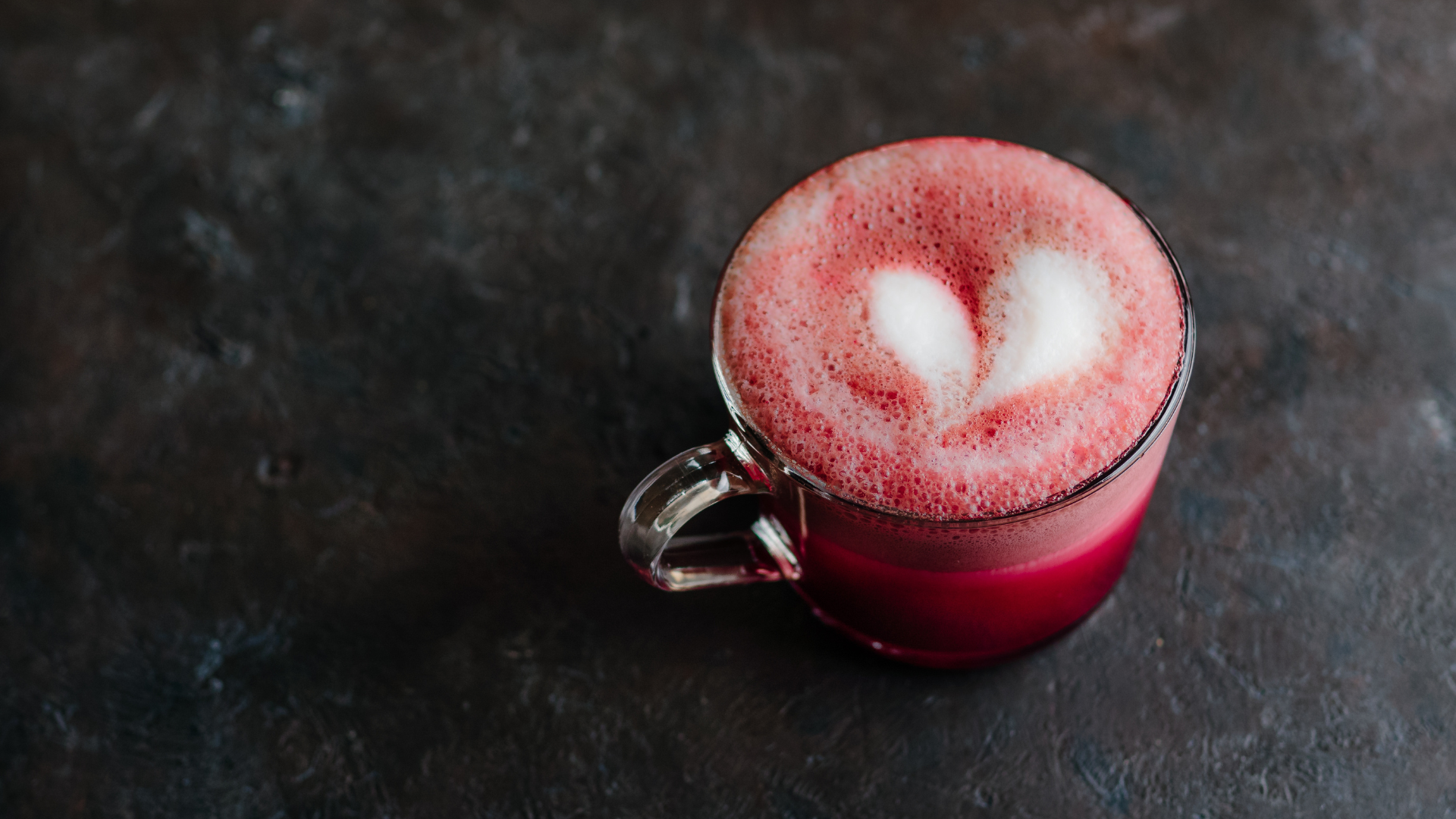
Ingredients
Pink Latte Mix
- 1/3 cup of beetroot powder
- 4 teaspoons of ground cardamom
- 4 teaspoons of ground cinnamon
- 4 teaspoons of ground ginger
- 1/8 teaspoon of ground cloves
Individual Latte
- 1 1/2 cups of desired milk
- 1 tablespoon of your pink latte mix
- 1-2 teaspoons of maple syrup or honey to sweeten
Directions
- To make the mix, combine all ingredients in a jar. Cover and shake until evenly combined.
- Steam your milk (using a frother if you have one). If not, warm in a saucepan over medium heat until nearly simmering and whisk briefly until frothy.
- Add 1 tbsp of your latte mix, plus 1 tsp of desired sweetener to a mug. Pour your steamed milk (minus the foam_ into the mug and stir. Add the foam on top and give a small stir.
- Serve immediately and enjoy! Store your leftover mix in a closed container for next time!
Find all ingredients at Jo Anne's Place. To see store hours, click here.
Made this recipe? Tag us on social media - we'd love to share your creation with our community!
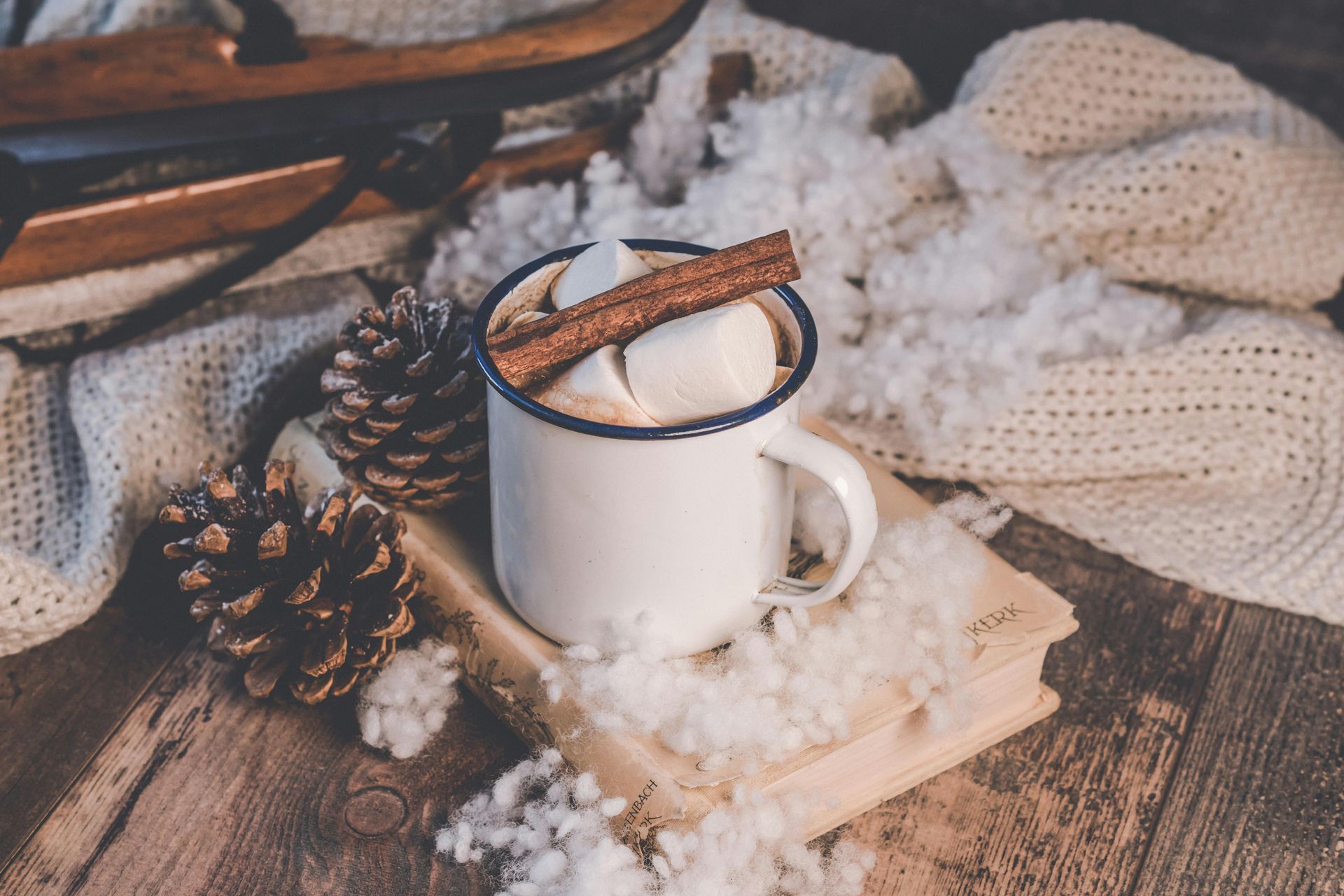
Feeling the Holiday pressure? In the midst of Winter’s chill and the Holiday rush, your own well-being deserves space to breathe. The natural world around us is slowing down, so why shouldn’t we? Winter invites us to turn inward, and it is especially important to support your mental health during these longer, darker days. Did you know that we, as Canadians, are more prone to Seasonal Affective Disorder due to our northern latitude, which results in less sunlight during the winter? The Holiday season can be equal parts joyful and overwhelming. Schedules get busy, routines slip, and we're surrounded by comfort foods and sweet treats. Between gatherings, travel, and to-do lists, our well-being can take a back seat. Here are some simple tips to keep you grounded, nourished, and feeling your best throughout the season: *These suggestions are not intended to replace appropriate professional advice. Please check labels for contraindications and check with your pharmacist if you are on prescription drugs. These suggestions are based on over 40 years of customer experience at Jo Anne’s Place.



